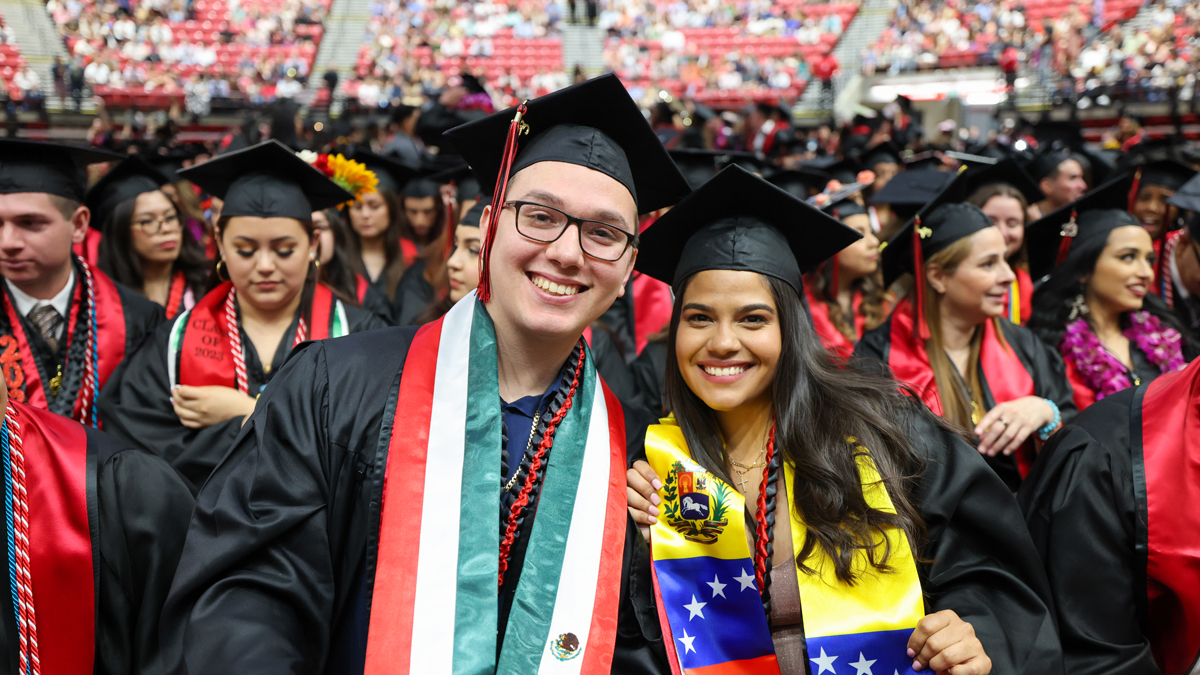SDSU Filmmakers Empower Asian Narratives in Cinema
Redefining Asian representation both on camera and behind-the-scenes

At the heart of great cinema is powerful storytelling. Stories told through film can evoke emotion, spark change, and influence culture. New audiences are exposed to different lenses of the human experience by movies that take inspiration from the world around us.
Diversity plays a crucial role in this process to ensure that one narrative doesn’t overpower another. At San Diego State University, young filmmakers are paving the way for Asian representation by using their passion for storytelling to amplify voices within their community.
For SDSU alumna Lexi Bautista Maxion, her Filipino roots were the backbone of her involvement on campus as a film production major and diversity chair of Associated Students. Her roles have emulated how much she values diverse representation, not only for herself but for those who share her experiences.
Becoming a storyteller for her community originally came from studying to be a journalist. As a journalism major, she was inspired to use her words to articulate her view of the world and learn from the people around her. But she found her true calling years later on a film production set, as a producer that could control the narrative of how her community was being represented on the silver screen.

“I can't tell you how much I love coming-of-age stories, but growing up, all of my favorite ones that I could list off for you are by white cinematographers. If I were to see someone of my color, or with my shared experiences on screen, it would’ve made me feel like it was actually a story made for me,” Maxion said. “That's what I want to do for others, is to make stories for them about them.”
In her latest student film project “Dead Dogs Still Bark,” Maxion met challenges being the only Asian woman on a predominantly white, male production crew. Even though she was surrounded by crew members she could trust, being a producer meant being able to assert herself in a room full of people and fight for her vision to come to life on screen. Ultimately, her dominance on set earned her the Best Producer award last semester at the SDSU Emerging Filmmakers Festival. Maxion’s coming-of-age horror comedy illustrates how stories told by Asian filmmakers aren’t limited to cultural heritage and tradition.
For third-year film production major Kaia Yamamoto, accurate representation comes from being accepted in this industry as a “filmmaker” first and an “Asian” filmmaker second. Growing up Japanese American, not only sparked his curiosity to unpack his family history through film, but also to create new stories that broke Asian characters out of stereotypical roles.
“A lot of acclaimed Asian films coming out have to do with Asian heritage and going deep into your own identity but you don’t have to tell those stories if you don’t want to,” Yamamoto said. “No matter what story you're telling, whether it's about your cultural identity or superheroes, at the end of the day, it’s your voice and technically, an Asian American story.”
Yamamoto has cultivated a community on campus for Asian creatives as president of the Asian Cinema Club. By hosting screenings that celebrate Asian filmmakers and promoting a space to share their cultural perspectives in short films, they’re able to empower one another as they navigate through this growing industry.
In his mission to rewrite Asian representation in cinema, he recruited fourth-year film production major Isabel Adamos to be the vice president of their club. Through her work, Adamos continues to inspire club members to combat white-centric films by asserting their presence on set. As a Filipino woman, those parts of herself have only strengthened her to perfect her craft and prove to audiences that the stories of her community are worth telling.

In her recent passion project “Dissonance,” Adamos takes “a slice of family dramedy” to portray an eldest daughter’s struggles to meet family expectations after her younger sister lives out her dream of going to Julliard. As a producer, she has collaborated with her director to illustrate new perspectives like the dynamic between siblings or being a product of an immigrant household.
But most importantly, the role of perspective allows audiences to understand the challenges and joys faced by characters on screen and those lived by filmmakers behind the camera.
“I think I've improved a lot on showcasing and communicating culture in terms of having a very nuanced approach to it now. I look at films like ‘Everything, Everywhere’ where culture isn’t really in your face but you know that this is an Asian story. So instead of it being so loud, having it be a thing of showing audiences that my experiences can also be your own, just in a different way,” Adamos said.

“I think a lot of the time, media portrays us as our struggles and the trauma that we face as a community. It'd be refreshing to see that we are just siblings fighting, people eating at restaurants, or just people bumbling into relationships and culture just being the backdrop of that.”
As a piece of advice to young Asian filmmakers, “you might have to work twice as hard as everyone else but eventually you'll get your roses and it’ll all be worth it.”

